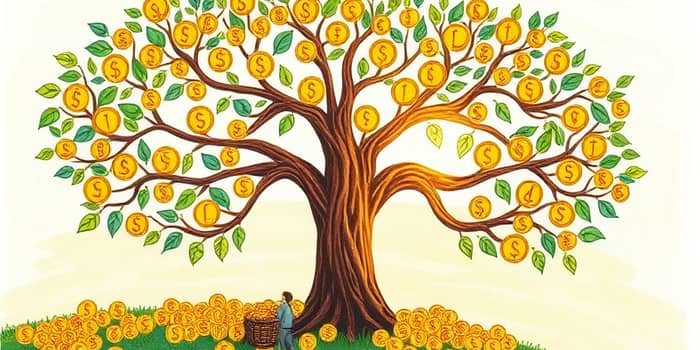
Imagine waking up each month to see a steady flow of cash arriving in your account, not because you traded your time for money, but because your investments have been quietly working for you. This is the promise of dividend investing: harnessing steady and reliable dividends to build a foundation of long-term financial security. Whether you’re a seasoned investor or just starting out, understanding how to create a portfolio that pays you back can transform your financial future.
Throughout this guide, you’ll discover the fundamental principles, proven strategies, and inspiring stories behind dividend investing. By following these steps, you can build a resilient portfolio, cultivate a passive income stream, and benefit from the power of compounding returns.
At its core, dividend investing is the practice of buying shares in companies that distribute a portion of their profits back to shareholders at regular intervals. These payments, known as dividends, are typically issued quarterly or monthly and represent a share of the company’s earnings.
Beyond the immediate benefit of cash distributions, dividends play a critical role in long-term wealth accumulation. When reinvested, they purchase additional shares, accelerating growth through compounded returns. Many investors rely on dividend income to cover living expenses, supplement retirement accounts, or reinvest for exponential growth.
Investors can choose from various dividend approaches depending on their goals. The following table outlines the most common strategies and their characteristics.
By selecting one or a combination of these strategies, you can tailor your portfolio to balance income, growth potential, and risk tolerance.
Dividend investing offers a compelling array of advantages for those seeking to enhance their financial well-being. From generating regular cash flow to providing a buffer in turbulent markets, dividends bring stability and growth.
Starting a dividend-focused portfolio requires clear goals, disciplined research, and strategic allocation. Begin by defining whether you aim for immediate income or long-term growth through reinvestment.
Even seasoned investors can stumble if they focus too heavily on yield without assessing underlying fundamentals. Awareness of typical mistakes can safeguard your capital and future income.
Harnessing the right platforms and instruments can simplify your journey. Dividend-focused ETFs offer broad exposure to high-yield or dividend-growth stocks without the need to select each component. Automated investment apps provide features like pie charts or autoinvest functions, making regular contributions and rebalancing effortless.
Track key metrics such as S&P 500 average dividend yield, currently in the 1.5–2.0% range, and monitor the roster of Dividend Aristocrats—companies with at least 25 consecutive years of payout increases. These benchmarks can guide your selections and benchmark performance over time.
Dividend investing is more than a strategy; it’s a mindset anchored in patience, discipline, and the pursuit of sustainable returns. Each dividend check you receive is a tangible reminder of the long-term financial security you’re building, brick by brick, quarter by quarter.
By adopting this approach, you align your investments with companies that value shareholder returns, benefit from the power of compounding returns, and create a reliable income stream that can support dreams, retirements, and legacies. The journey may span decades, but the rewards—both financial and emotional—are profound.
Begin today by researching a handful of dividend payers, mapping out your ideal portfolio, and taking the first concrete steps toward a life where your money truly works for you.
References













